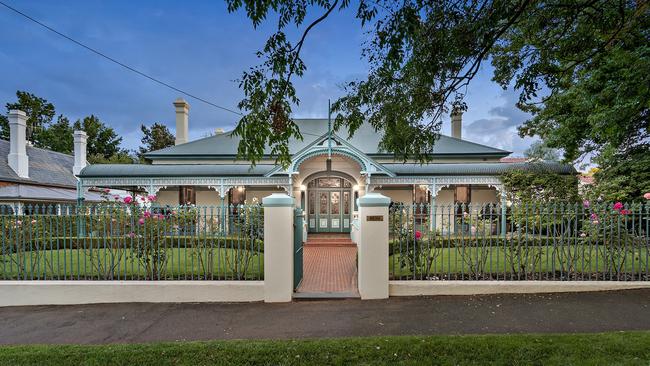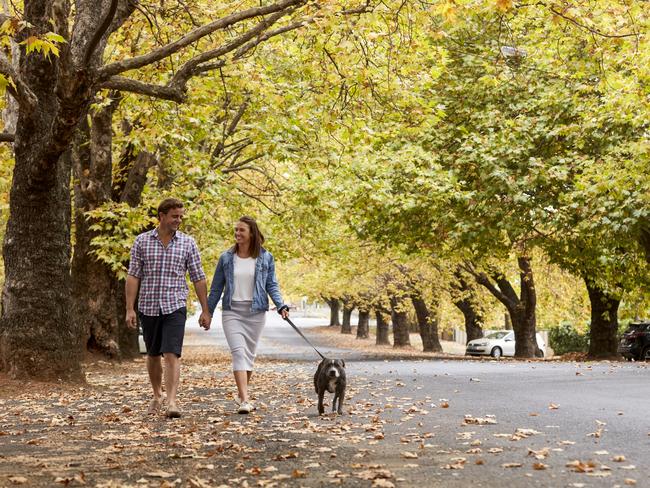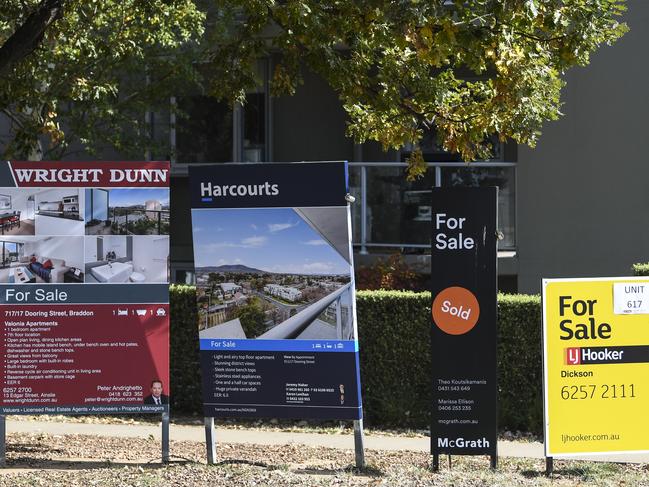Housing affordability crisis regional Australia, demand for inner city units to rise ‘substantially’
A lack of investment in regional areas over the past 50 years means the Covid migration out of the cities is putting the squeeze on housing across the country.
Property
Don't miss out on the headlines from Property. Followed categories will be added to My News.
The pathway to leaving the city and achieving a better work and home lifestyle in the regions appears to be a challenge especially when it comes to housing.
That’s the candid admission of The Australian Local Government Association (ALGA), the national voice of the 537 councils across the country. They confirm that many regional areas have encountered the spurt in population growth since the pandemic started which has led to an increased demand for housing.
“Unfortunately, many regional areas had underlying pre-existing housing challenges,” it told the House of Representatives inquiry into housing affordability and supply.
The ALGA advised the crisis “now extends to regional and rural communities which have been impacted by changes to internal migration patterns during the recent Covid period”.
It noted there had been a lack of investment in housing in regional areas “over many decades, with very few houses in many towns having been built in the past 50 years”.

This means there’s a lack of affordable housing for rent and or purchase for those seeking the pandemic pivot. The ALGA noted the age of existing dwellings had adversely impacted on the appeal of regional migration while adding the nicer properties in tourism destinations were converting to Airbnb.
Just like the city, the absence of smaller dwellings was inhibiting older residents vacating larger dwellings for the regional migration of families.
The recent decades had seen a systemic decline in builders and tradespeople, due to an ageing workforce which hasn’t been helpful.
And while private investor activity is returning nationally, it is unclear whether this is occurring in regional markets, against the backdrop that regional housing typically does not support a commercial return for private developers.

According to the Regional Australia Institute (RAI), housing pressures are normal in high growth, high price, high amenity areas such as Byron, Kiama and the Wingecarribee local government areas where supply constraints partly reflect natural geographical restrictions, but also inadequate planning to address the mix of housing.
The RAI notes other regions come with severe under-investment in housing, with very low levels of approved home building and renovation work per capita. There has been a solution suggested for another government grant scheme proposed by Dr Kim Houghton, RAI chief economist, who wants a regional new home (and major renovation) guarantee.
It is similar to, but would go deeper than the current First Home Loan Deposit Scheme. Houghton suggests that a government-backed guarantee would beat barriers to finance which are specific to regional communities as financial markets “often conspire with low valuations” for home buying, building and renovation to “significantly reduce regional households’ access to finance”.
Despite all the issues, recent CommBank research found 37 per cent of potential home buyers are considering moving interstate or to a regional town in search of more affordable options.

DEMAND FOR INNER-CITY APARTMENTS TO RISE ‘SUBSTANTIALLY’
Capital city apartment rents are recovering from their pandemic lows.
The gap between the rate of growth in rents for houses and apartments has been narrowing in 2021, especially in Sydney which saw the nation’s largest rise in rents over the past three months, up 2.4 per cent.
The rental market had been struggling before the pandemic hit early last year, the result of the oversupply arising from the recent apartment construction boom.
But then the market saw the abrupt departure of tenants who’d lost their jobs in the early lockdowns. Next came the stalling in overseas migration followed by a marked preference shift towards lower density housing options during the pandemic.
But the rental cycle moves ever onwards, and Tim Lawless at CoreLogic noted apartment rental demand is on the improve given it’s more affordable.

CoreLogic has seen the number of advertised rental listings dropping.
Between March and November of 2020, the number of units advertised for rent increased by 20 per cent across the capital cities and rents fell by five per cent. Inner city unit rentals were worse off with advertised rentals jumping 49 per cent.
But by the end of October 2021, the number of inner city unit rental listings had fallen to 55 per cent below pre-Covid levels.
While capital city house rents are up 10 per cent since March last year, unit rents remain 0.3 per cent below pre-Covid levels, with inner city unit rents generally down the most.
In Sydney, renting an inner city unit remains 3.1 per cent – or $21 a week – cheaper than it was in March last year. Median dwelling rents range across Sydney from $467 in the outer south west to more than $1000 on the northern beaches.
Sydney landlords certainly fared better than Melbourne landlords given a lower level of exposure to net overseas migration, and Sydney’s new unit supply has been more geographically widespread rather than centred with inner city locations.
The good news for landlords is that rents are now rising across each of the inner city unit precincts of Australia; even Melbourne inner city unit rents.

Rental demand for inner city tenancies will further increase as the CBDs and inner suburbs see some workers gradually return to the office.
And once international borders open more fully, Lawless anticipates demand for inner city units will rise “substantially”, as foreign students and international visitor numbers pick up.
The softer rental performance in apartments sees a similar trend in prices.
House values are up 24 per cent over the year across the capitals, rising at more than double the annual pace of apartments, which are up 11.8 per cent.
Sydney house values are up a stunning 30 per cent compared to a 13 per cent rise in apartment values, while in Melbourne house values rose 19 per cent over the year compared with a nine per cent gain in unit values.
The gap between the median Sydney house and unit value is now $496,000, at $1.333m for houses to $837,000 for apartments.





